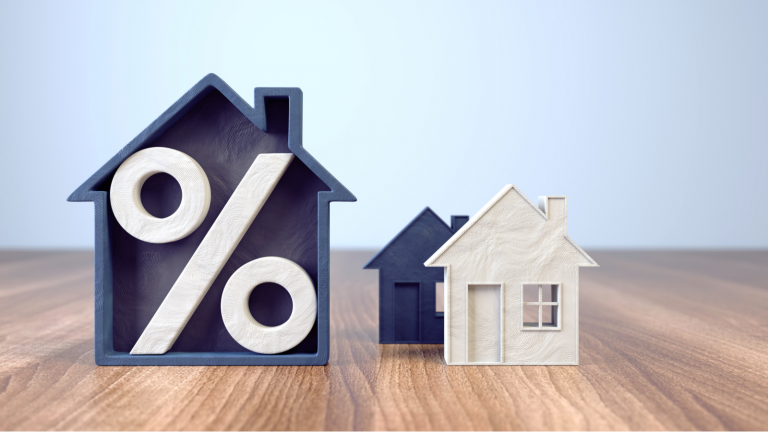What Do Rising Mortgage Interest Rates Mean for Home Sellers?
Home sellers can expect to get high prices for their homes right now, despite the fact that mortgage interest rates are fairly high.
This week, the average rate on a 30-year mortgage dropped to 5.27% from 5.45% last week. But those average rates on a 30-year mortgage are significantly higher than the 52-week low of 3% and significantly higher than the benchmark 3.16% 30-year fixed-rate from a year ago.
Even though rates remain high, a sellers market continues. In April, the median selling price of homes reached $391,200, up 15% from selling prices recorded in April of 2021.
Many experts, including Florida Atlantic University economist Ken H. Johnson, remain perplexed. He notes that “[eventually] mortgage rates will slow down home prices, but it hasn’t happened so far.”
This implies that sellers who want high prices for their homes will push for their deals to close quickly. Sellers are anticipating a decrease in prices and the longer a sale takes, the lower the selling price they anticipate.
The good news is that many experts, including Mike Fratantoni of the Mortgage Bankers Association, believe rates are done rising. That implies current sellers could find themselves in an advantageous situation in which the sales price of their home significantly exceeds any increase in mortgage payments due to interest rates.
What Do Rising Mortgage Interest Rates Mean for Mortgage Lenders?
Rising mortgage interest rates mean that mortgage lenders can expect greater revenues moving forward. At the beginning of May, it was reported that a median-priced home — $429,000, according to the St. Louis Federal Reserve Bank — will cost $5,640 more annually due to rising rates. That price increase was calculated based on a 5.3% 30-year fixed-rate mortgage, very close to the 5.27% rate reported this week.
That $5,640 figure equates to a monthly mortgage that is now $470 higher than it was a year ago. Over the life of a 30-year fixed mortgage, a lender will receive $169,200 more than a lender on a similar home a year prior.
It must be mentioned that the impetus for raising interest rates is rampant inflation. Thus, the consumer, already saddled with increasing prices everywhere else, now has to compete with average home costs that are nearly $170,000 more expensive.
Mortgage lenders are in a better position, yes, but all stakeholders, including homebuyers, must be accounted for.
A related analysis concludes that new mortgages have increased by $259 due to rising mortgage interest rates. That equates to $93,000 amortized over the life of the loan going straight to the lender.
What Do Rising Mortgage Interest Rates Mean for Home Builders?
For home builders, the impact of rising mortgage interest rates is more difficult to gauge.
On the one hand, since 30-year fixed-rate mortgage percentages began to move sharply upward in late December, new housing starts have essentially stagnated. In December, when rates sat near 3.3%, there were 1.768 million private new-home starts, according to the Census Bureau. By April 2022, that number had slightly declined to 1.724 million private new-home starts. That implies that rising mortgage rates are causing a slowdown in construction.
Yet, between April of last year and this year, new home starts had increased by 14.2%. That seems to imply the opposite.
Authorizations for new-home starts are booming, as well, rising 18% between April 2021 and April 2022.
It seems that demand for more housing is not slowing, despite rising rates. That is likely attributable to a lack of supply, which is partially responsible for pushing rental prices to record levels. In short, it looks like home builders could be busier as both authorizations for home starts and actual new home starts have risen rapidly.
What Do Rising Mortgage Interest Rates Mean for the Economy?
Rising mortgage interest rates mean a lot of things for the economy. It should be noted that much of what is happening is a reaction by the Federal Reserve (Fed).
The Fed is reacting to historically high rates of inflation. Our central bankers kept benchmark borrowing rates low throughout 2020 and 2021. That meant that there was a lot of money floating around in the economy. It also meant that mortgage rates were low, as they tend to coincide with benchmark borrowing rates set by central banks.
The Fed also printed massive amounts of stimulus money at the same time. Those factors coincided to create an environment where inflation increased dramatically.
So, the Fed has reacted by increasing benchmark borrowing rates, which are likely to reach between 2.5% to 2.75% by the year’s end. And rising Fed rates equate to rising mortgage rates. Both of which have the effect of cooling the overheated economy.
On the date of publication, Alex Sirois did not have (either directly or indirectly) any positions in the securities mentioned in this article. The opinions expressed in this article are those of the writer, subject to the InvestorPlace.com Publishing Guidelines.

